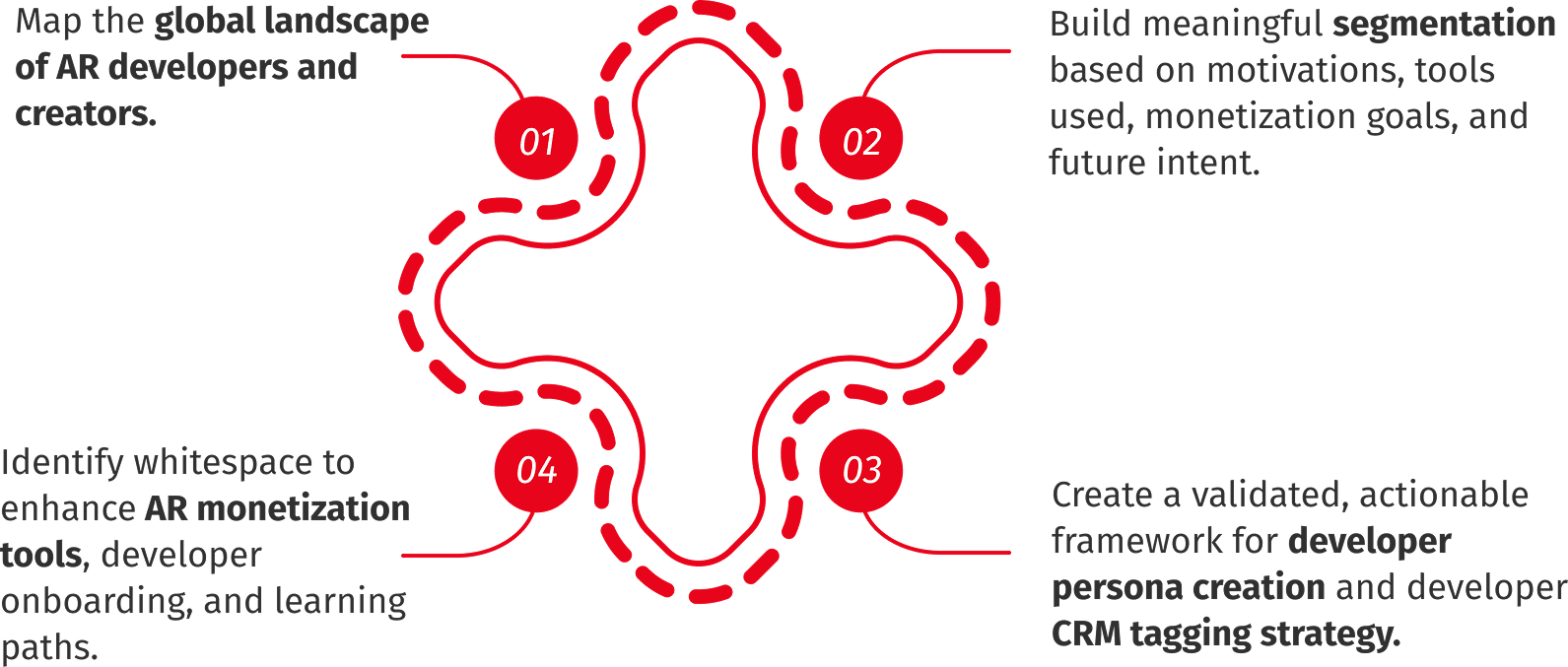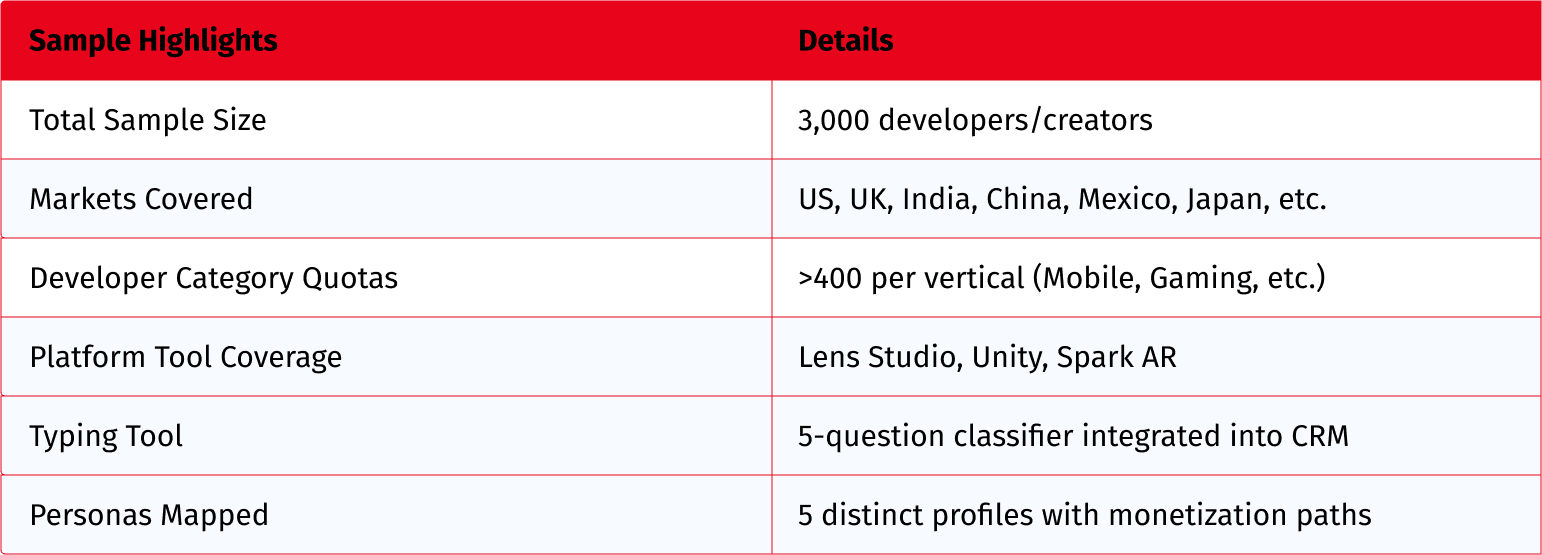Technology
Unlocking the Enterprise Buyer


Note: For confidentiality purposes, the client name has been masked. However, this global camera-first platform is renowned for pioneering augmented reality experiences, empowering AR creators through tools like Lens Studio and Camera Kit, and reshaping how the world communicates visually.
As augmented reality (AR) evolved from novelty to necessity, one of the world’s leading camera-first platforms needed to go beyond general user data. Their aim? To deeply understand and segment the global developer ecosystem-from hobbyists to professionals-who were engaging with their AR content creation tools across diverse geographies.
With growing competition in AR development and increasing demand for personalized AR experiences, the client recognized a critical blind spot: they lacked a global AR developer segmentation framework. Their internal data was insufficient to guide product design, developer engagement, or AR monetization strategy at scale.
To power future growth and innovation, our mandate was to:

Using our proprietary Enterprise Segmentation methodology, we deployed a deeply layered approach:
1. Immersion & Hypothesis Co-Creation
2. Qualitative Discovery
3. Quantitative Deep Dive
4. Segmentation Analytics
5. Persona Validation & Workshop
6. Typing Tool & CRM Integration
7. Digital Targeting & Lifecycle Activation

Product Strategy
Marketing Strategy
Ecosystem & Community Support
Developer Learning & Enablement
Global Insight Advantage
By combining deep qualitative understanding, quantitative rigor, and behavioral telemetry, this research laid the foundation for segmenting AR developers and creators in a way that’s actionable, scalable, and future-facing.
For this camera-first platform, the segmentation became a lens into the future-helping it build AR content creation tools not just for today’s developer, but for tomorrow’s AR pioneers.